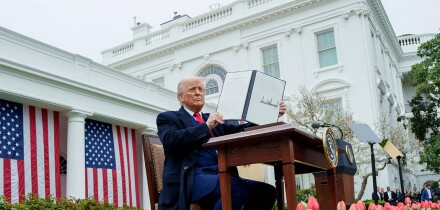Risk And Return In Intrinsic Time
Neoclassical finance deals with continuous time, but stocks do not trade continuously; and opportunities to profit depend on the frequency and volume with which one can trade.
The trading frequency *i of a stock, the number of trades per second, implicitly determines an intrinsic-time scale *i for that stock, the time ticked off by an imaginary clock whose units (dimensionless 'ticks') measure the passing of trades.
During the late 1990s, day-traders who made rapid round-trip trades in stocks are said to have controlled as much as 15% of the daily volume of technology stocks. We model their behavior by assuming that they focus on the return earned per tick of intrinsic time rather than per second (or month) of calendar time.
Intrinsic-time speculators describe the stock with the intrinsic-time doublet (Mi, (sum)i), where Mi is the expected return of stock i per tick and (sum)i is the stock's intrinsic-time volatility, the square root of the variance of the returns per tick. In contrast, traditional calendar-time investors characterize the stock by the calendar-time doublet (µi, *i).
There is a simple relation between these two doublets. Since a stock i's trading frequency *i is the number of intrinsic-time ticks in one calendar second, an increment *i of intrinsic time is related to an increment t of calendar time via
Since independent mean returns and variances add up over successive ticks, we find that
and
so that
We now take the view of a short-term day trader who lives in intrinsic time and cares only about the passage of ticks rather than seconds. We assume that day traders, except for their distorted sense of time, are otherwise rational and subscribe to an intrinsic-time version of the risk-return principle above, namely:
Two portfolios with the same perceived irreducible intrinsic-time risk should have the same expected intrinsic-time return.
All the relations between risk and return that we derived in Part 1 will therefore continue to hold after we transform them as follows:
All the relations between risk and return that we derived in Part 1 will therefore continue to hold after we transform them as follows:
Applying the transformation of equation 3.5 to equation 2.3, we obtain the relationship
where * is the dimensionless intrinsic-time Sharpe ratio, and *B is the trading frequency of the riskless overnight bond, typically of order one trade per day.
We can rewrite equation 3.6 as
where
is the temperature of the stock and is a measure of the perceived riskiness of the stock for speculators. Equation 3.7 states that expected excess return is proportional to temperature.
If you can diversify over many uncorrelated stocks, then * = 0 and,
so that the calendar-time expected return for a stock i exceeds the riskless rate if *i > *B.
The intrinsic-time version of the Capital Asset Pricing Model is obtained by applying the transformation of equation 3.5 to equation 2.8, yielding
If the riskless rate r is negligible, then all profit and loss comes from volatility and equation 3.9 simplifies to
Such speculators will expect a short-term return proportional to the traditional beta of the stock, but enhanced by the square root of the ratio of the stock's trading frequency to the trading and frequency of the market.
Market Bubbles
The interaction between intrinsic-time speculators and calendar-time investors can cause a bubble. Assume r = 0 and consider a stock with trading frequency *. Speculators will expect the return of equation 3.7, namely
Suppose that this return is realized as a consequence of their trading activity.
Calendar-time-based investors, following equation 2.3, will expect a return.
Observing the realized return µI, these investors will observe the excess return.
Suppose that this excess return attracts an additional number of calendar-time traders per second whose number is proportional to , so that
The last equality, expressed in terms of the intrinsic-time volatility (sum), follows from equation 3.3.
For large calendar time t, the first term on the right-hand-side of equation 4.4 dominates, and
From equation 4.1, µI = *(sum)* * *(sum)exp(**(sum)t). The stock's expected return grows exponentially with time and its price grows at the bubble rate (exp(**(sum)t)).
This growth rate described an unsustainable bubble. As the market runs out of calendar time speculators to keep driving the temperature up, the bubble must burst.
This week's Learning Curve was written by Emanuel Derman, who recently retired from Goldman Sachs where he was a managing director and head of the quantitative risk strategies group in the firm-wide risk department in New York. He can be contacted at emanuel@ederman.com.






